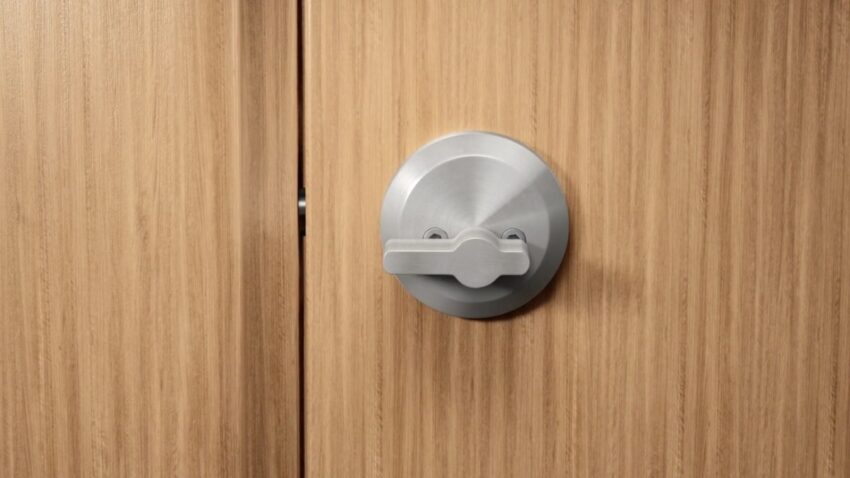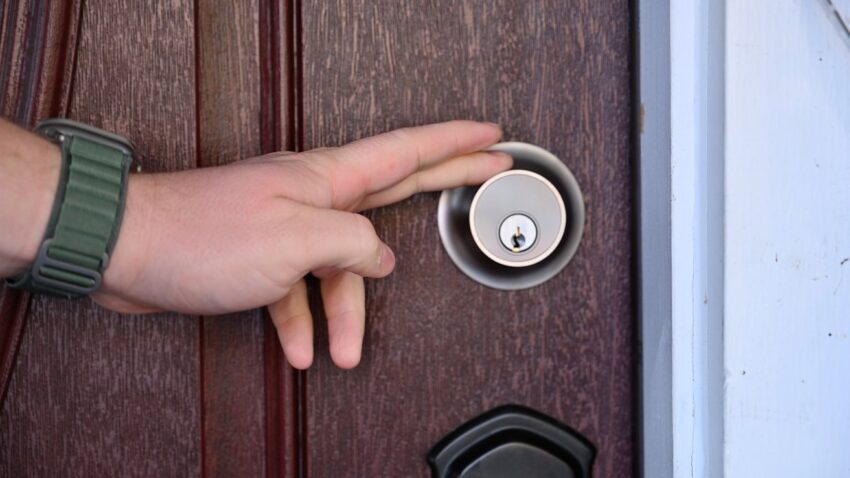
How secure is an invisible smart lock
What’s the most secure smart lock? That depends on how you define security. If you’re looking for a lock that won’t let anyone in, then it doesn’t get much better than an invisible smart lock. But if you’re looking to protect your belongings with an electronic keypad or fingerprint reader, there are plenty of options out there that offer even more protection than an invisible smart lock can provide. The article is presented by healthyflat.com
Physical Security

The lock is installed on the inside of the door, so it’s not visible to anyone outside. This means that you can keep your old deadbolt and still use this smart lock. If you’re installing a new deadbolt and want to go all-in on security, then we recommend getting an electronic keypad with passcode entry as well so that nobody can get into your home without knowing how to enter their code (and if they do guess incorrectly too many times, then they’ll be locked out). Discover the gatehouse locks.
Electronic Security
The electronic security of a smart lock is one of the most important things to consider when buying a new one. It’s important to know that no smart lock is completely secure and there are always ways for someone to get into your house if they really want to, but some are better than others at keeping out intruders.
The biggest issue with electronic security is that it can be hacked. If someone knows how computers work and they have access (or are able), they could find a way into your home using your phone’s Wi-Fi connection or even just plug directly into the device itself if needed. A hacker could also physically steal an unlocked smart lock off of its hinges so long as he has enough time before anyone notices his presence within range of his target residence–and then simply walk away with it once done!
Remote Access Security
The most important thing to keep in mind is that a smart lock should be encrypted. That means that your data is safe from prying eyes and hackers, who can’t get into the system without knowing the password. It also means that the connection between your phone and the lock itself will be secure, so no one else can see what you’re doing or change anything on their end either.
The next step is making sure that both parties (you and whoever has access) have secure logins as well as passwords for their accounts–this prevents someone else from logging in under false pretenses. If this isn’t possible because of financial reasons or whatever else might prevent someone from getting an account with a new service provider, then at least make sure they use strong passwords! You’ll want something long enough so it’s difficult for someone else to guess but not too long so they don’t remember it later on down the road either; ideally there would be some sort of auto-fill feature built into whatever product/service was being used here but even if there isn’t one available right now we recommend keeping track yourself instead rather than relying solely on memory alone since other security measures may not hold up against determined hackers looking specifically for ways around them.
User Management
The first thing to consider is user management. You’ll want to make sure you have a good password and that your lock is encrypted. This will prevent someone from hacking into your smart lock and unlocking it for themselves or at least make them work harder if they try.
You should also have a backup plan in case something goes wrong with your device–it might not be able to connect to the internet or get power from its battery (or both), so it’s best not to rely solely on one technology or another when installing an invisible smart lock on your front door!
Potential Vulnerabilities
There are a few potential vulnerabilities that you should be aware of.
First, there is the physical security of your home. If someone breaks into your house and disables the smart lock, they can easily get inside. However, this isn’t really an issue with most smart locks because most people don’t keep their keys in their front door (or even outside at all) for easy access by potential intruders.
Second, there’s electronic security–the ability of hackers to access your system remotely via Wi-Fi or Bluetooth connectivity. This may sound scary but there are ways around this problem: you can change passwords frequently so that if someone does hack into your system they won’t be able to do much damage; also make sure that when setting up new devices like smartphones or tablets that have access through apps like Alexa Voice Service (AVS), Google Assistant/Home Assistant, etc., those devices are protected behind strong passwords too!
Conclusion
Overall, the Lockitron is a great option for those who want to add an extra layer of security to their homes. It’s easy to use, affordable and offers many features that other smart locks don’t have. However, it does have some potential vulnerabilities which should be taken into consideration before purchasing one of these devices.
You may like to read Why is TikTok the leading platform for advertisements?
